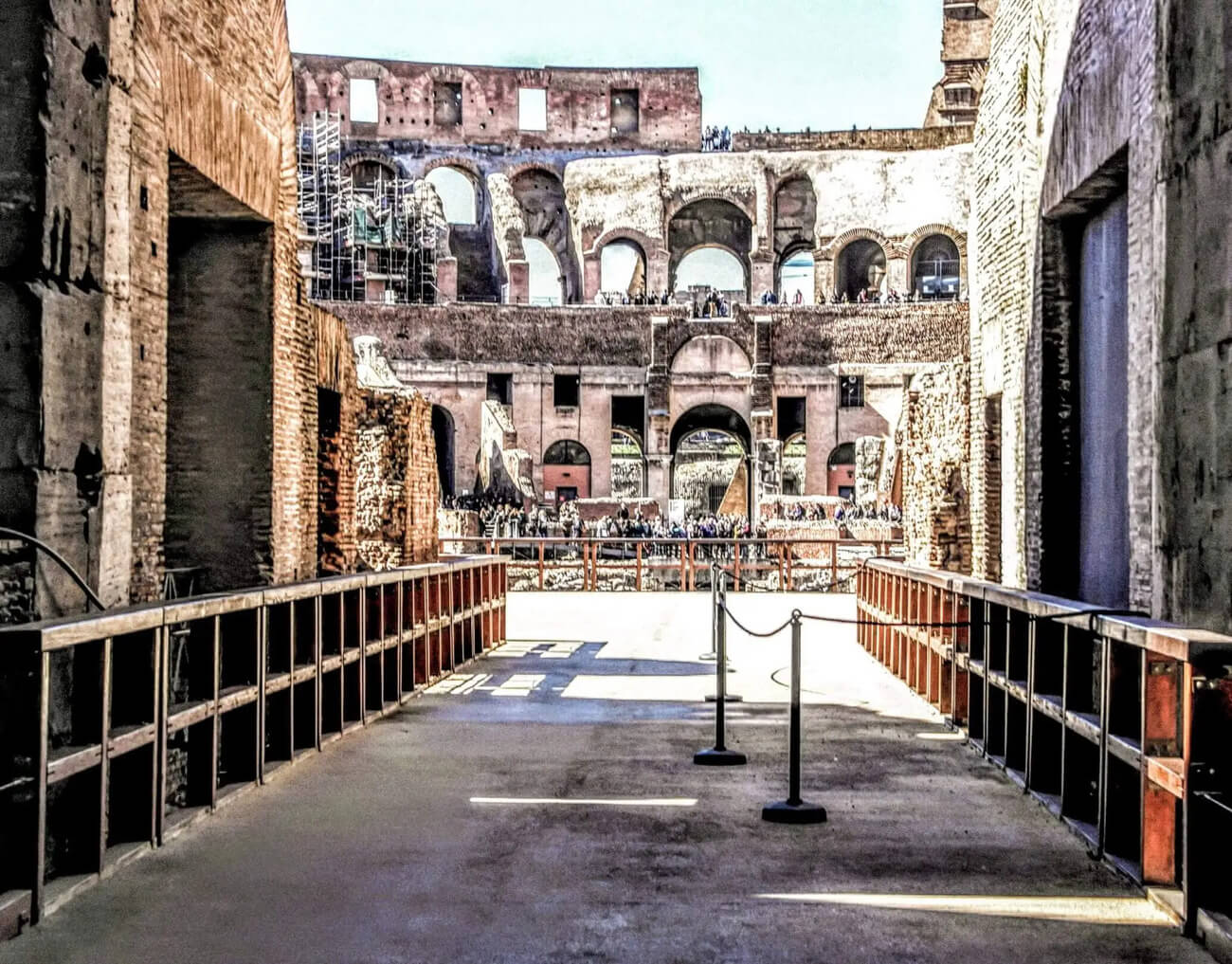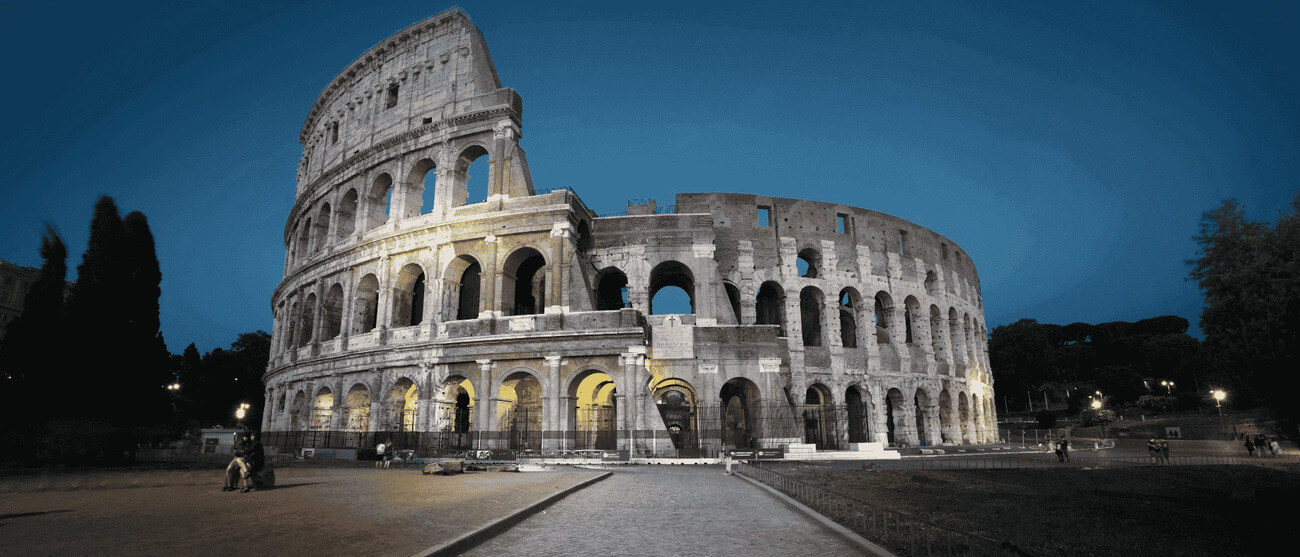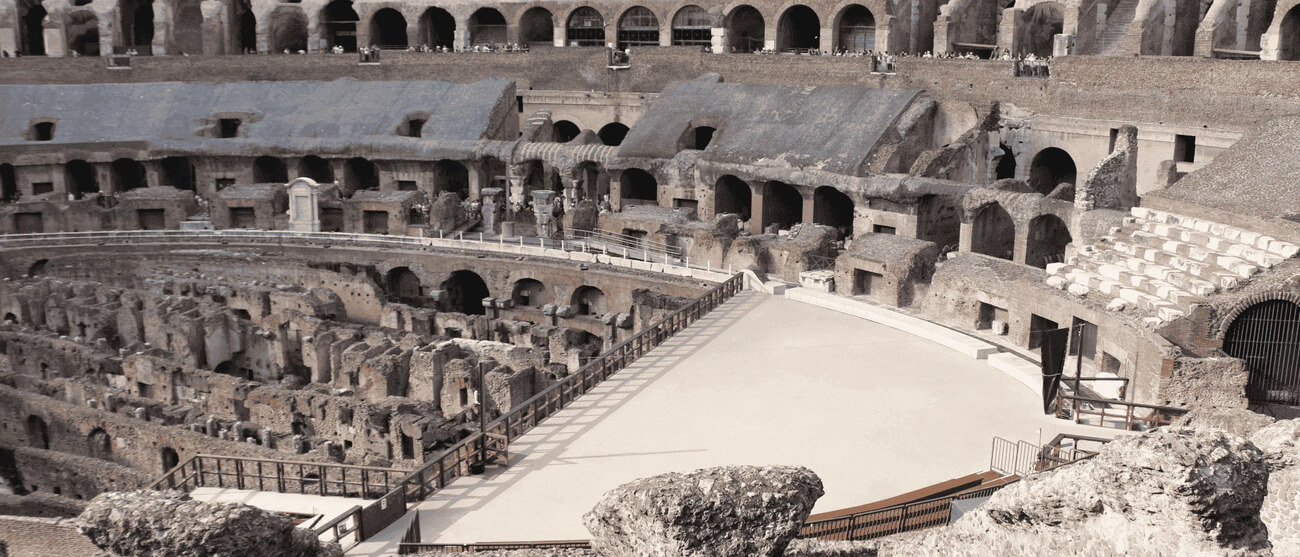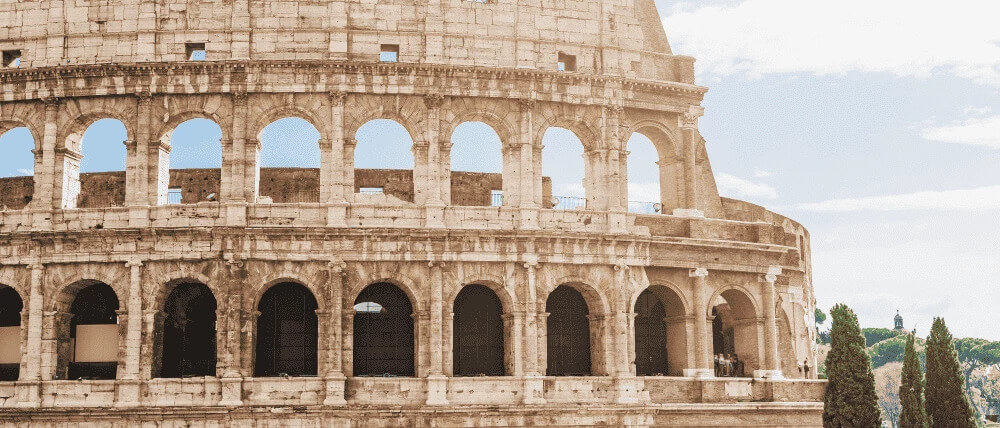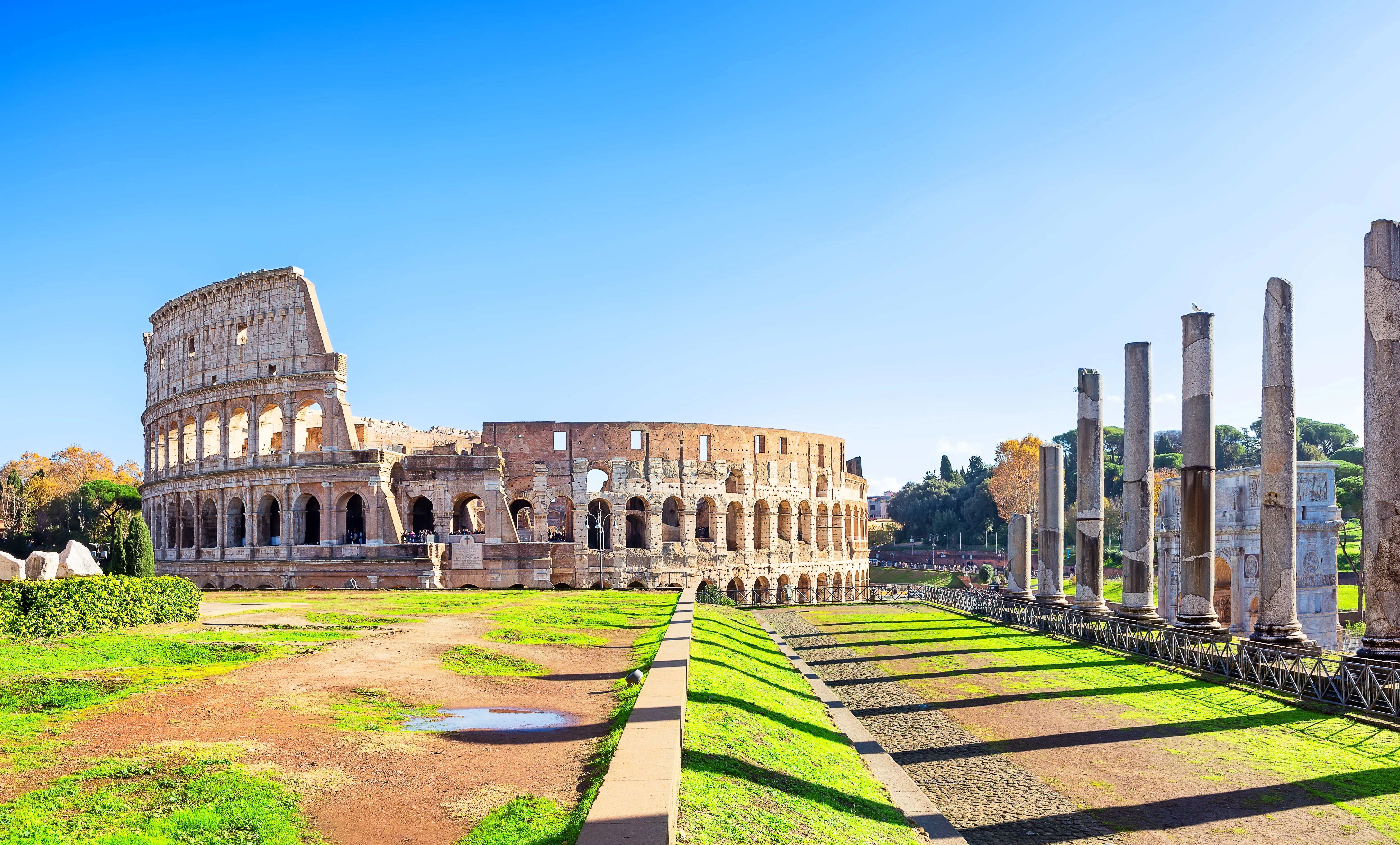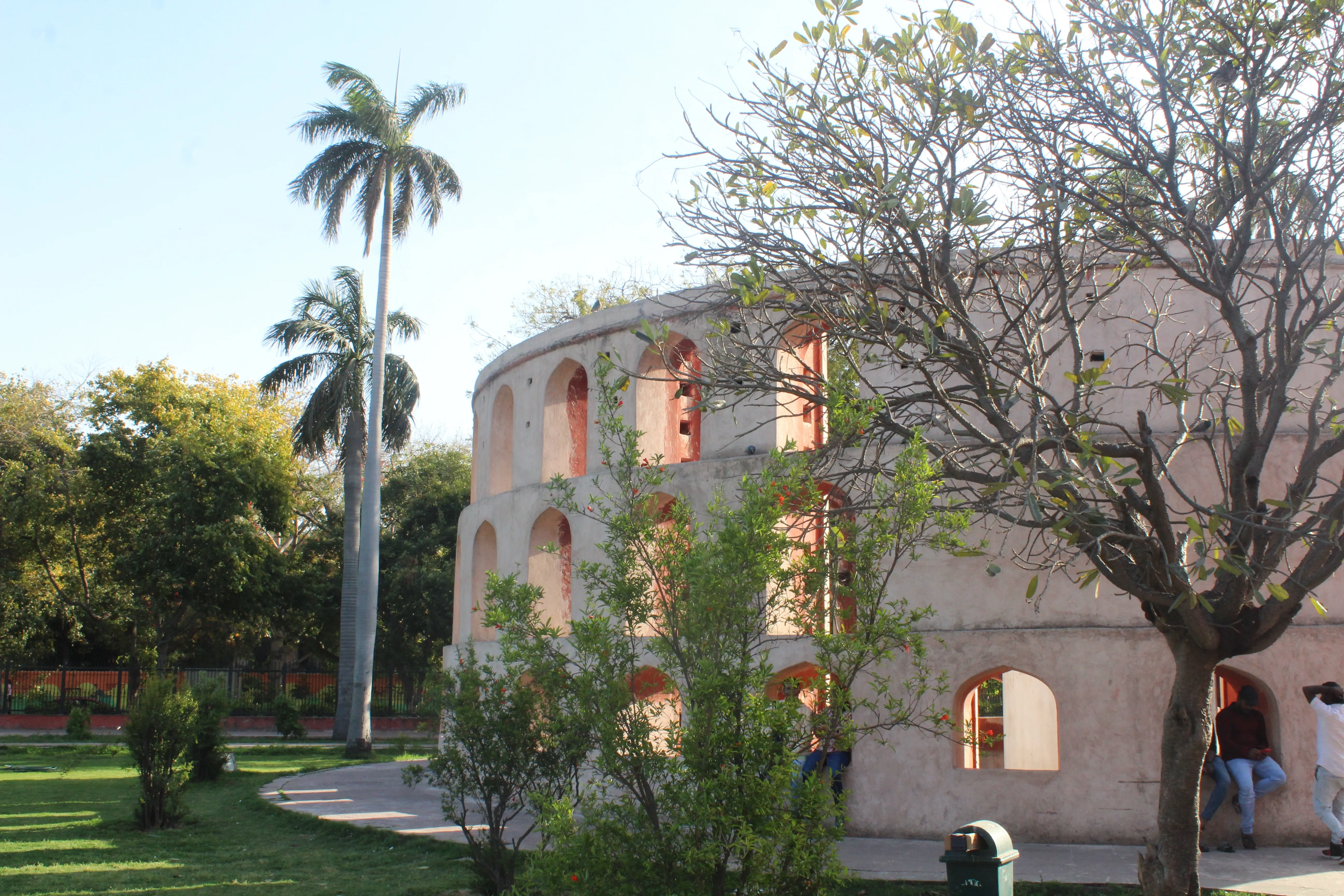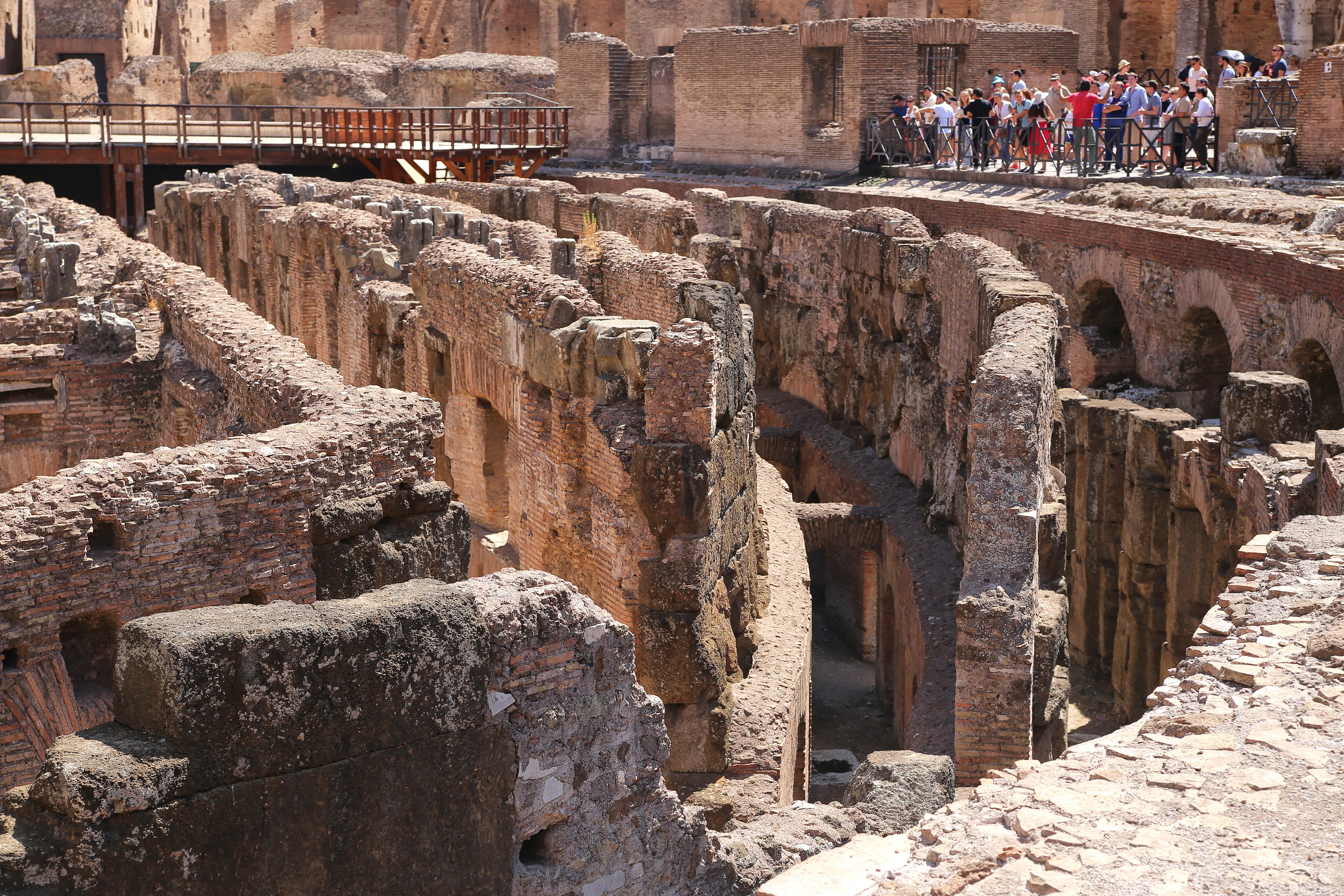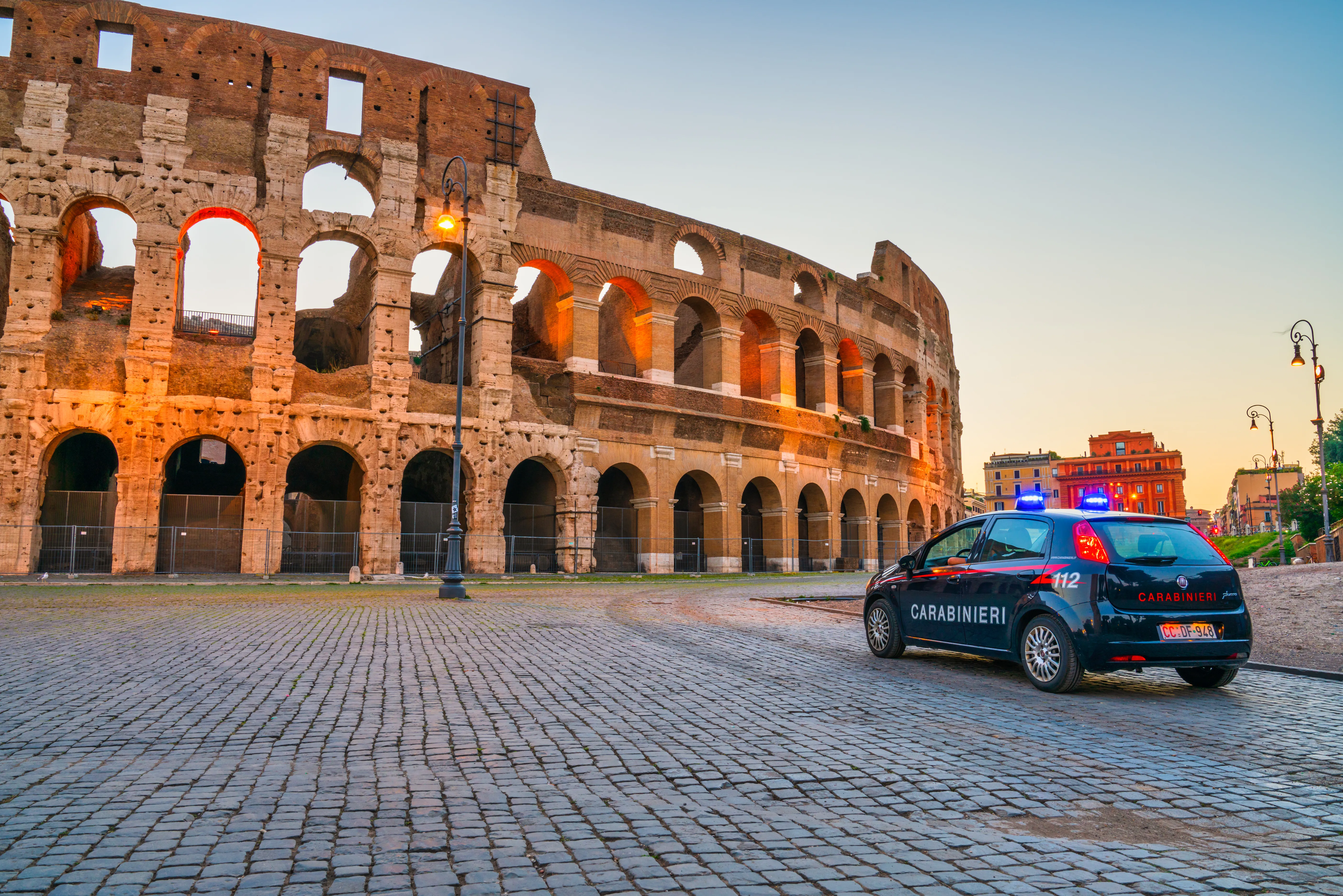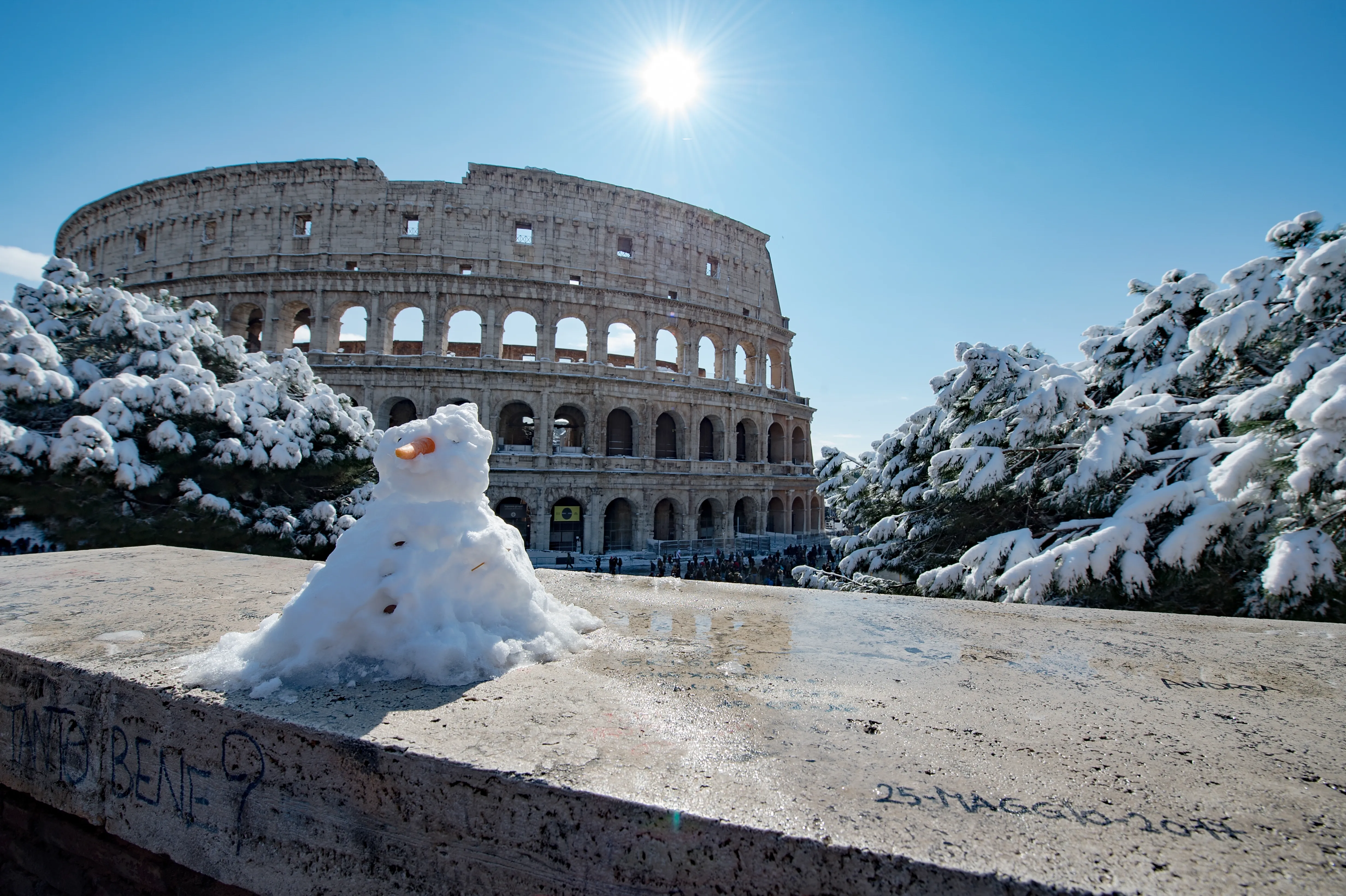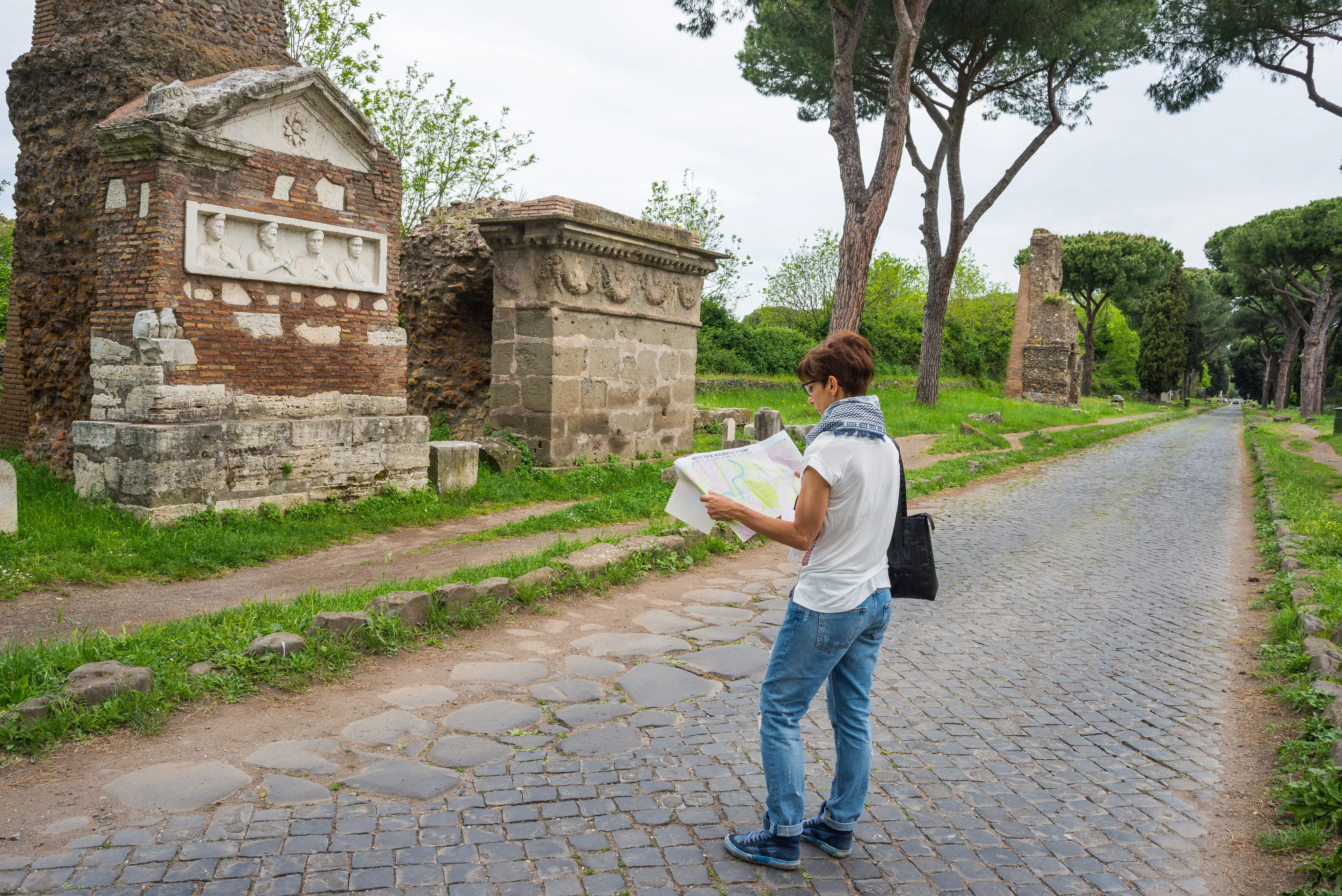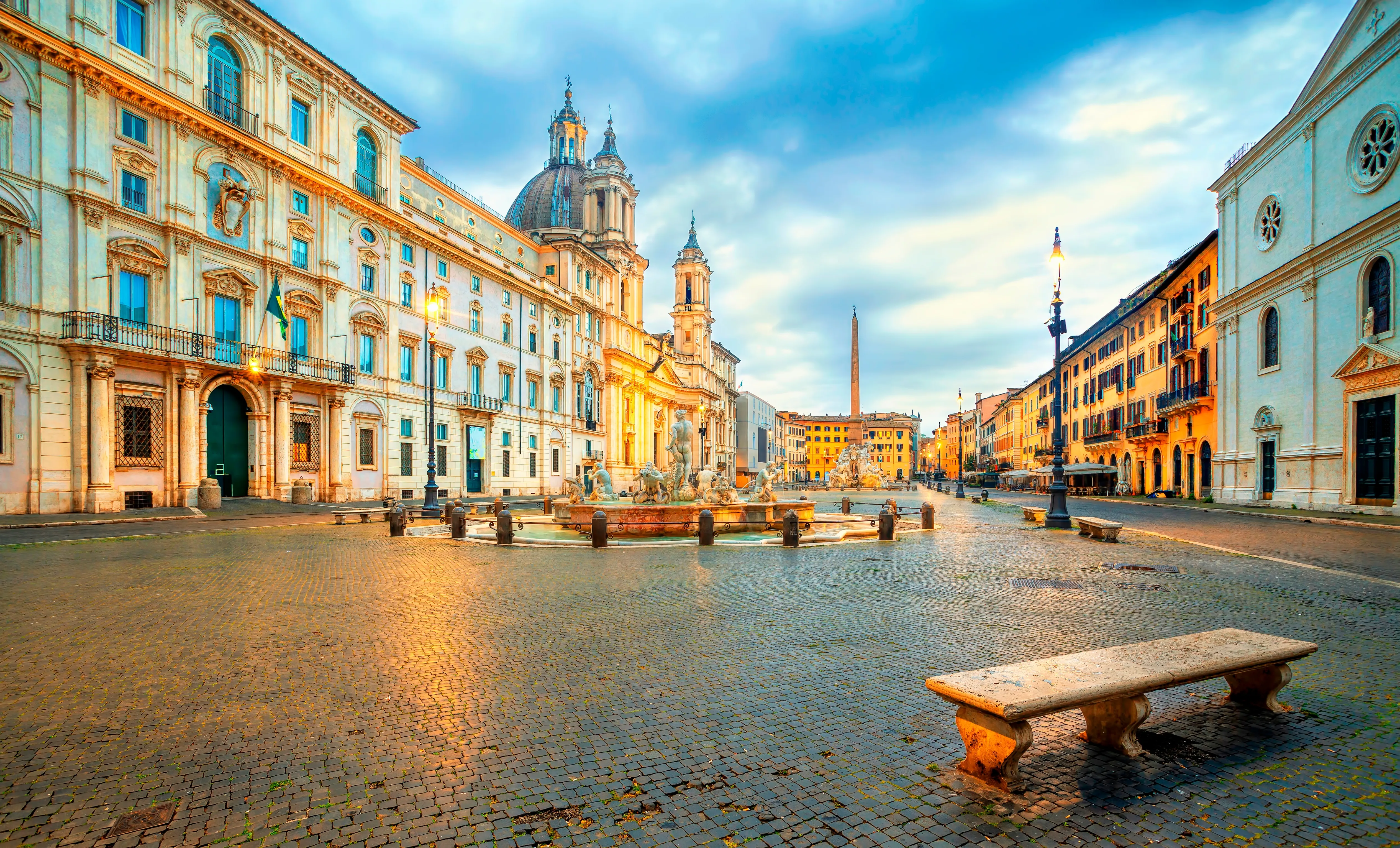
The Catacombs and the Appian Way
Dating back to the 2nd century AD, the Roman catacombs were used primarily by Christians and Jews. The many miles of underground passageways served as burial grounds and were used until the 5th century. Christians and Jews buried their dead, unlike pagans who opted for funeral pyres, and the high price of land drove the cemeteries underground.
- Inside the Catacombs: Burial Practices and Sacred Underground Networks
- Walking the Appian Way: Ancient Roadways and Timeless Scenery
Inside the Catacombs: Burial Practices and Sacred Underground Networks
The labyrinthian catacombs, that snake their way underground for many miles, are made up of passageways lined with niches dug into the walls. These niches would house the dead bodies that were wrapped in sheets and the name would be marked by a gravestone of baked clay or marble. Burial of the dead was prohibited inside Rome’s walls, so the catacombs were constructed outside the city. Rome’s most visited catacombs include: San Callisto, San Sebastiano, Priscilla and Domitilia.

Walking the Appian Way: Ancient Roadways and Timeless Scenery
The Appian Way, of the famous quote “all roads lead to Rome,” started at the Roman Forum and spanned all the way to modern-day Brindisi, a total of 563 km. Small, soft gravel was used to cement in place the larger stones of the road. Today the Appian Way, known as Via Appia Antica to locals, is lined with ancient tombs and green pastures. Coupled with a visit to the nearby catacombs, retracing the footsteps of ancient Romans with a walk down the Appian Ways is the ideal way to spend an afternoon.
